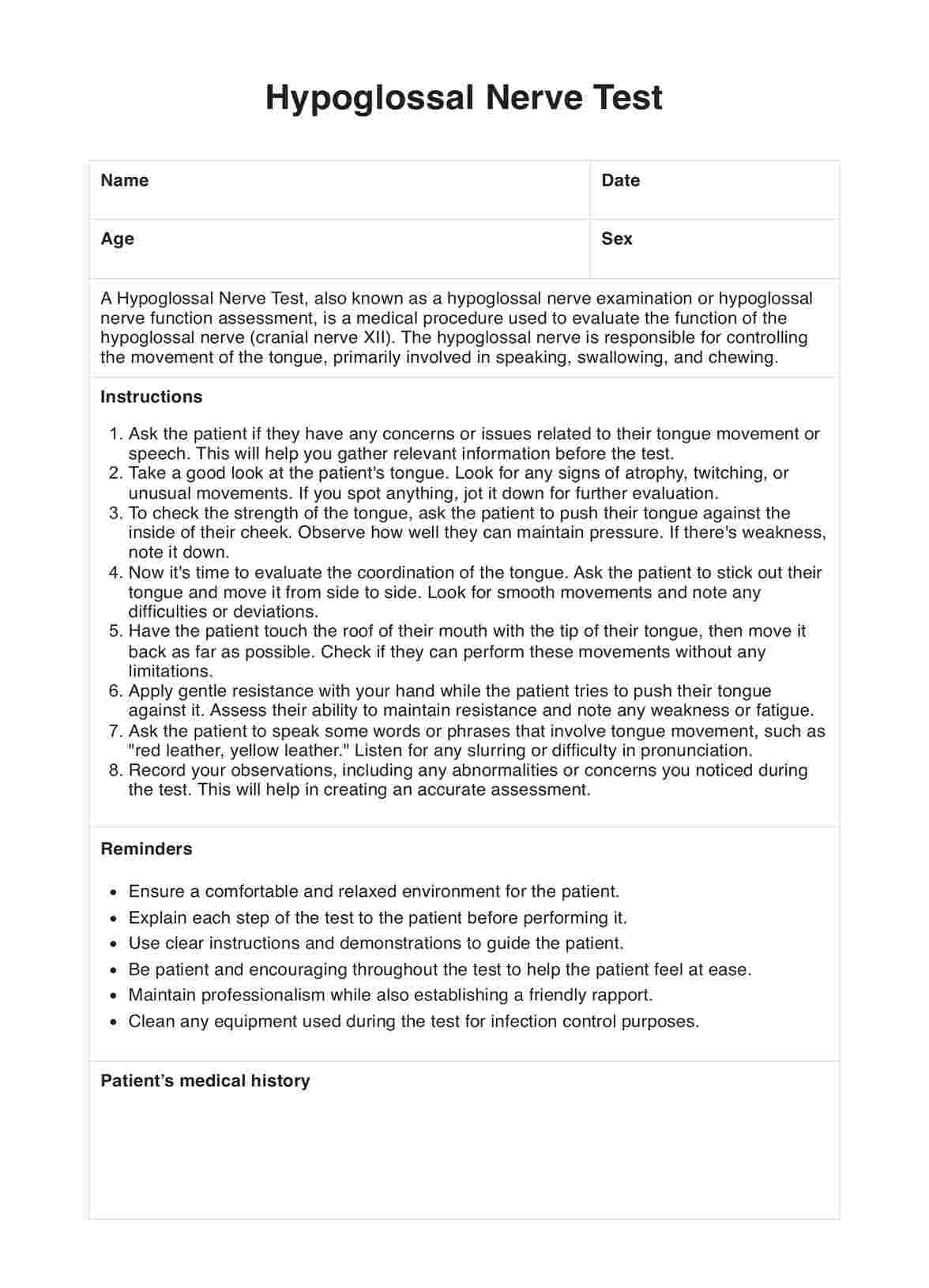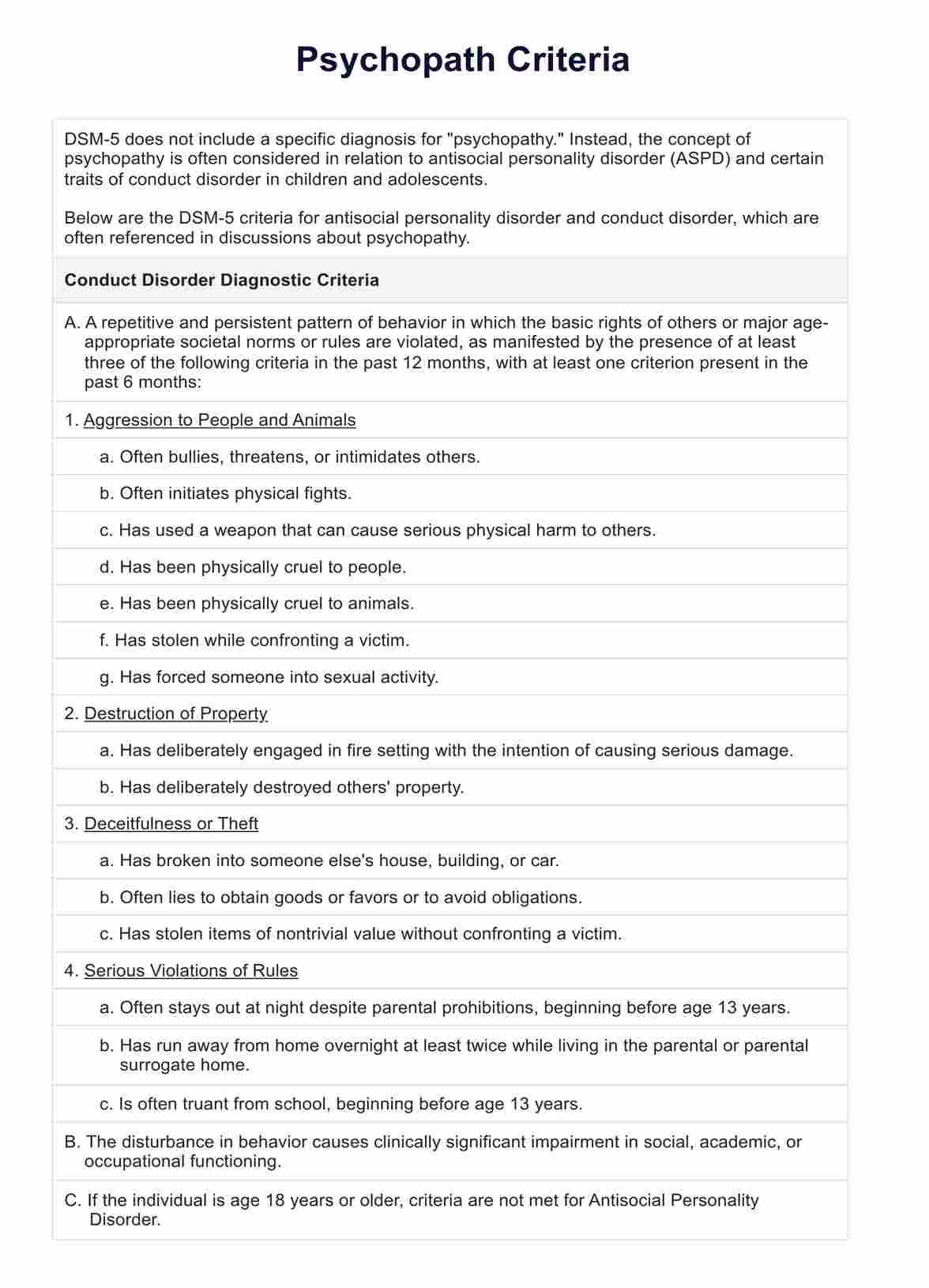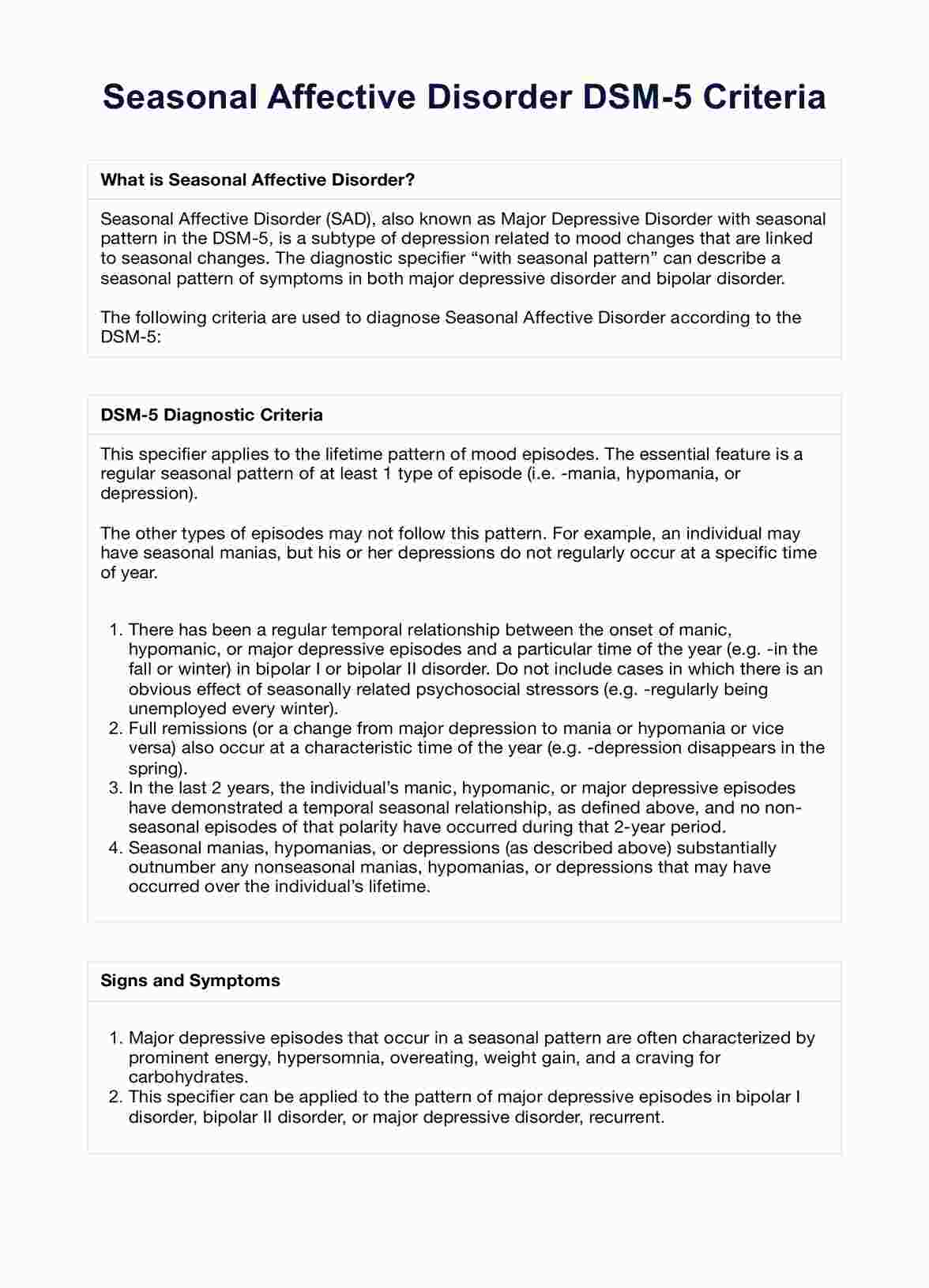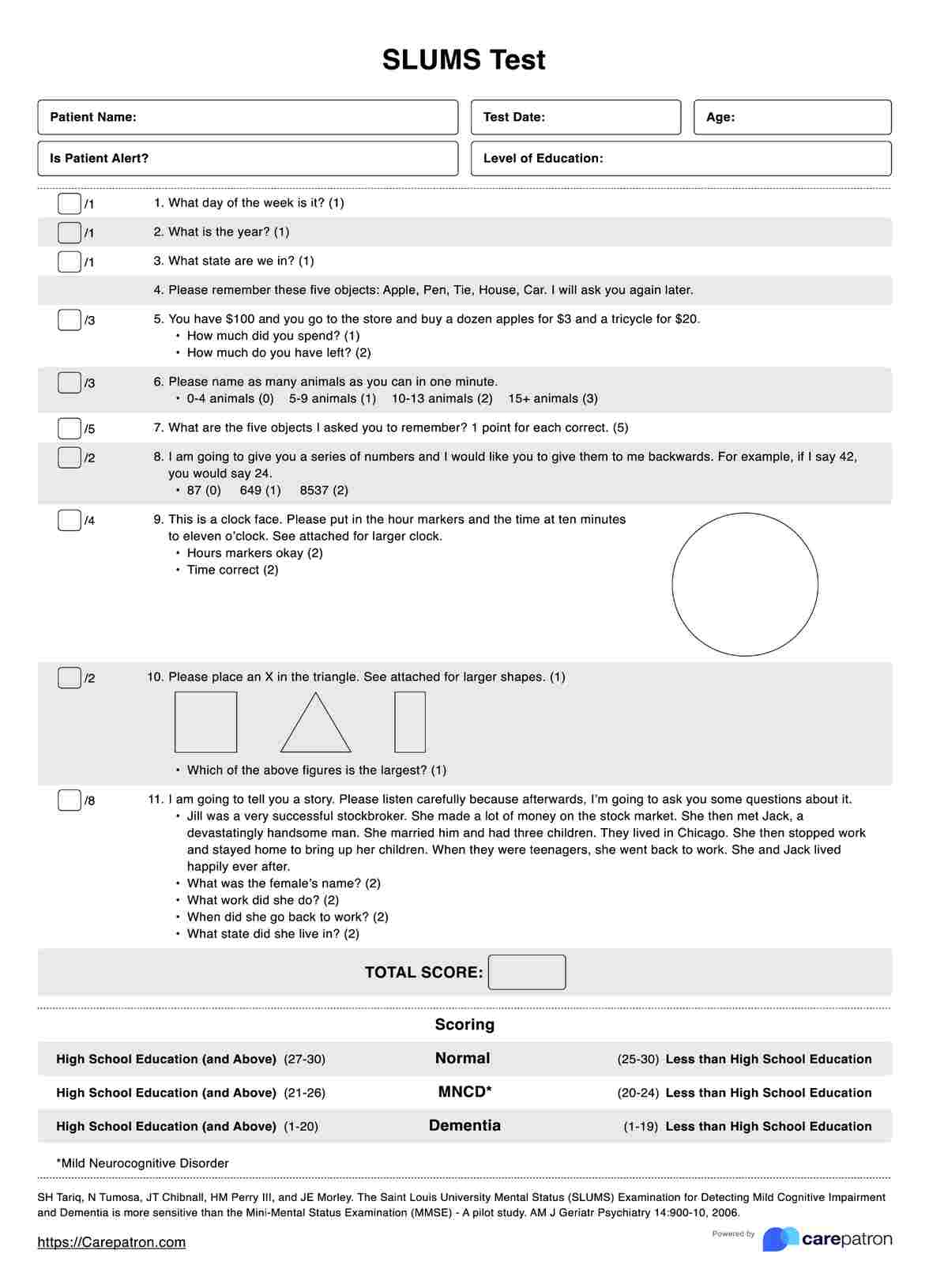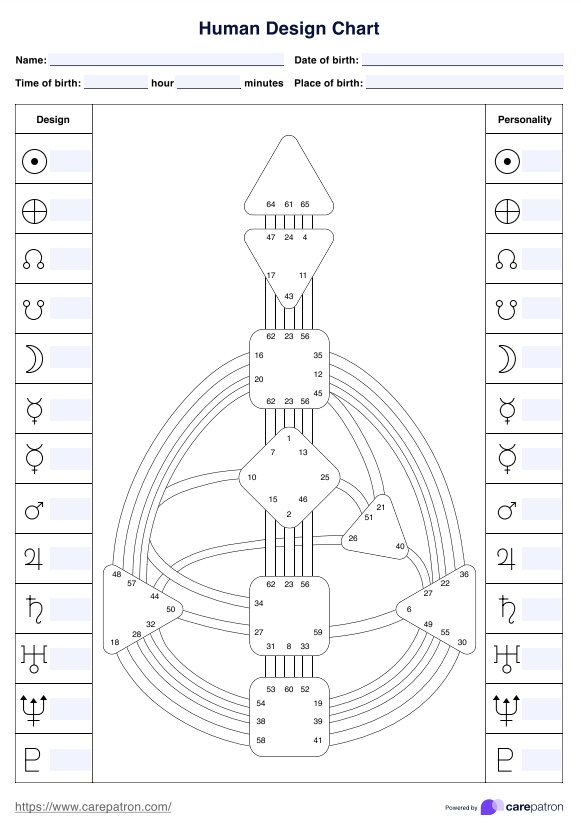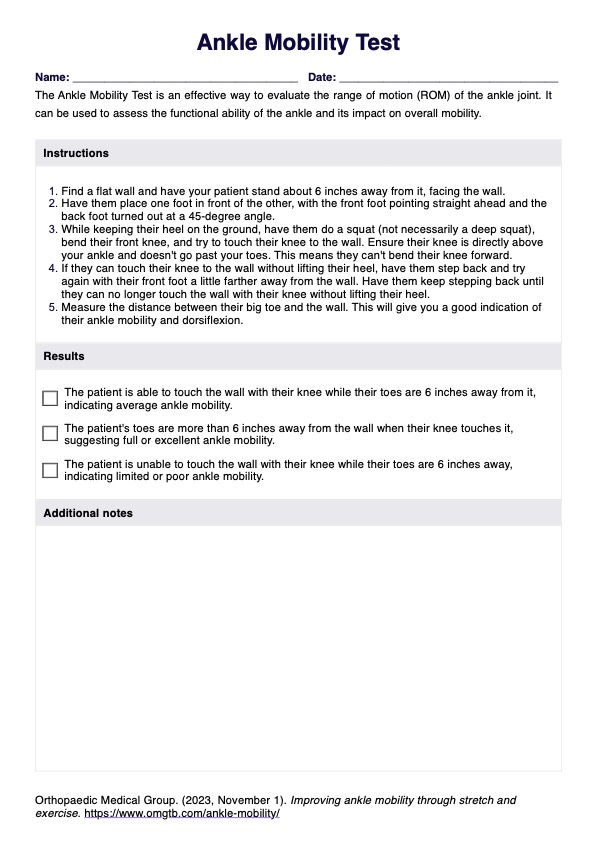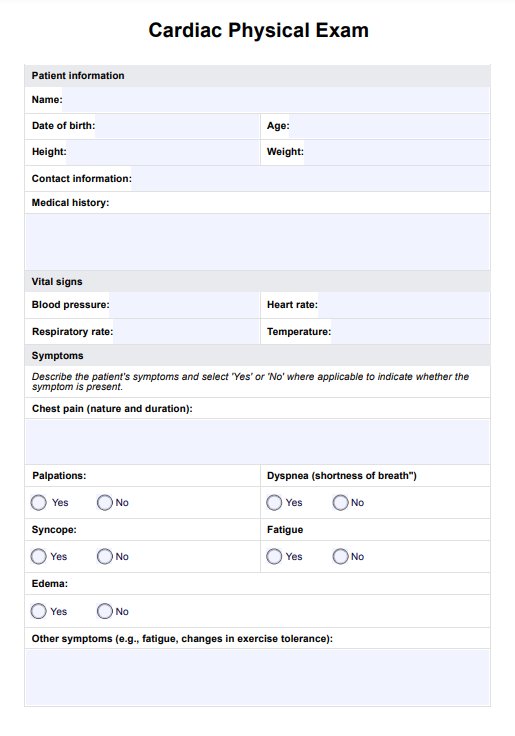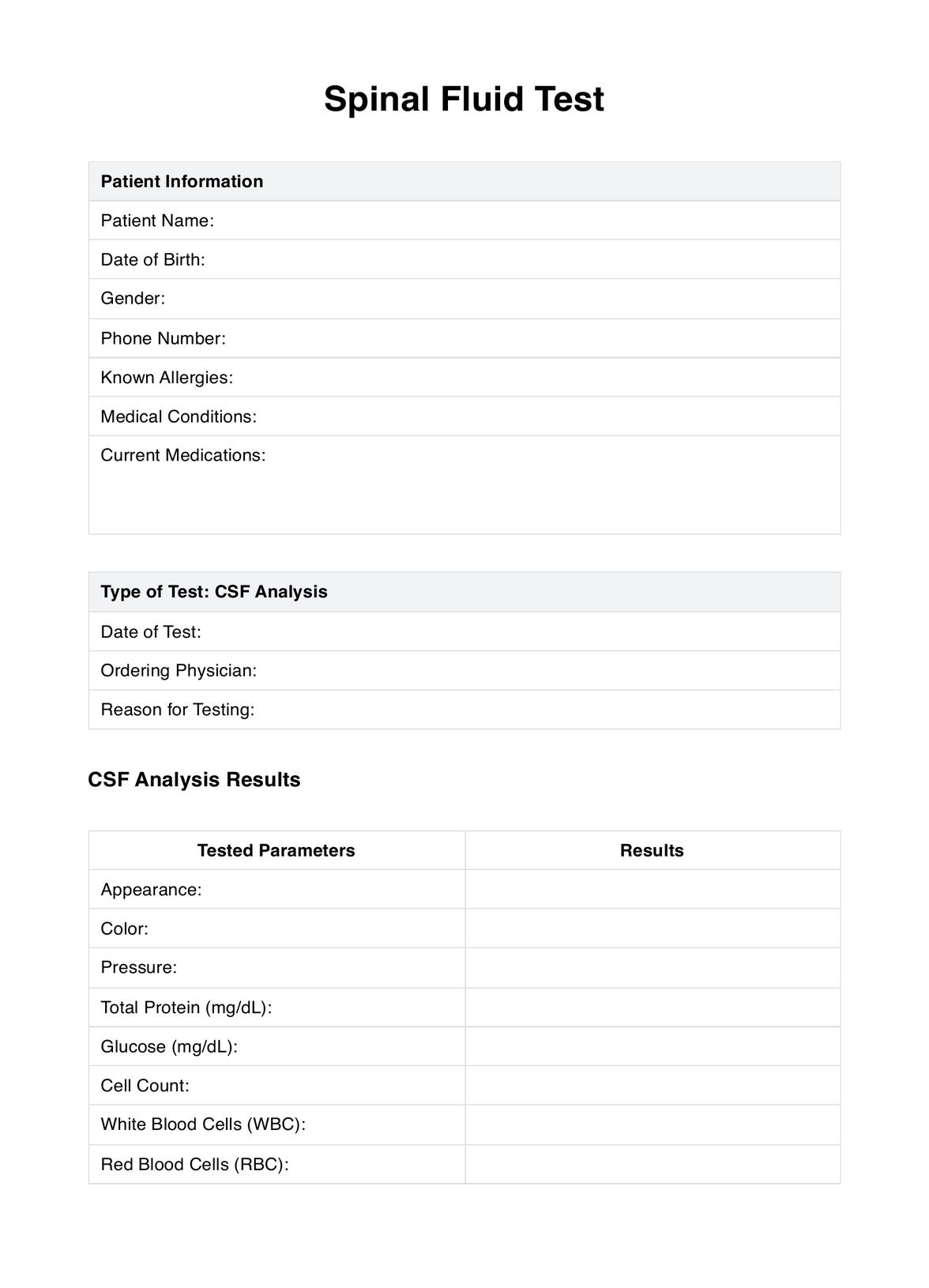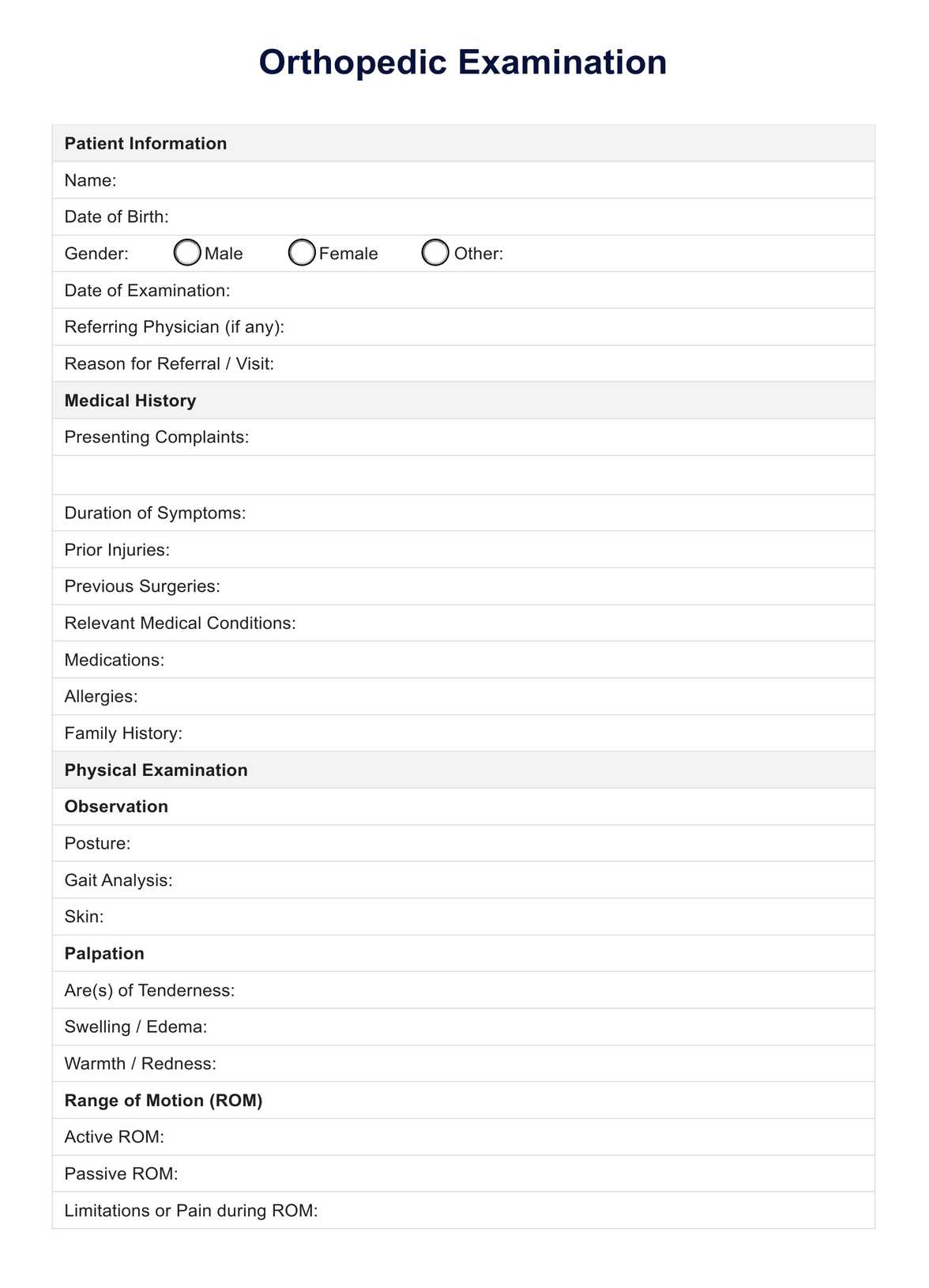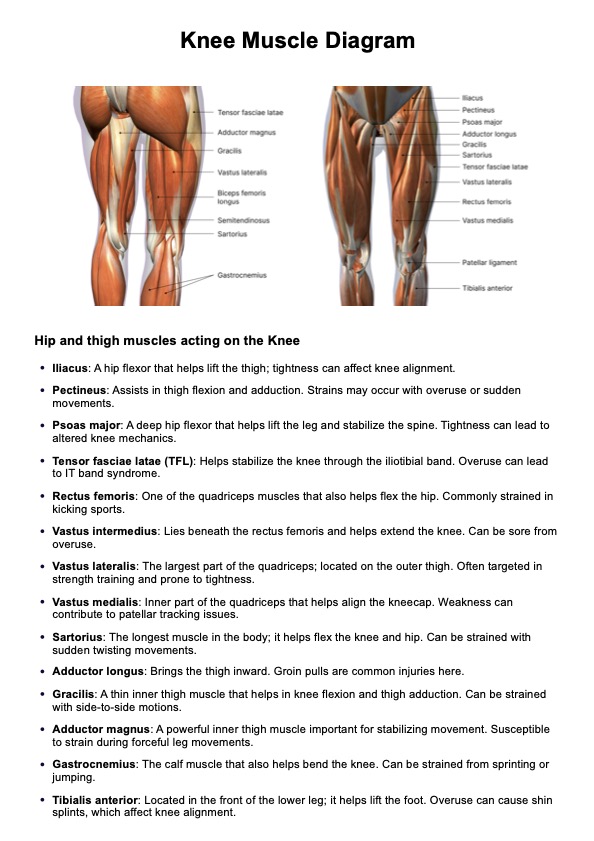Romberg Test
Learn about the Romberg Test, a clinical assessment of balance and proprioception, and download our free PDF template to help streamline the testing process.


What is a Romberg Test?
The Romberg Test is a simple, non-invasive neurological test used to evaluate a person's balance and proprioception, which is the ability to sense the position and movement of one's body parts without visual input.
The test is often performed as part of a neurological examination, especially when evaluating patients with balance disorders or sensory ataxia. By removing visual input and focusing on the patient's proprioceptive and vestibular systems, the test can help identify potential issues related to balance and coordination.
In addition to its simplicity and non-invasive nature, the is valuable for isolating the function of the proprioceptive and vestibular systems from visual input. These systems play a crucial role in maintaining balance and coordination, and when dysfunction occurs, it can significantly impact a person's daily activities and quality of life.
The Romberg Test, as part of a comprehensive neurological examination, can help healthcare professionals identify potential underlying issues, guide further diagnostic testing, and inform appropriate treatment strategies to address balance and coordination problems effectively.
Romberg Test Template
Romberg Test Example
How does this printable Romberg Test work?
Our printable Romberg Test template simplifies conducting this essential clinical assessment by providing clear instructions, a consistent testing approach, and an organized format for recording patient performance and results.
This guide will outline the steps involved in using and filling out the template, ensuring that healthcare professionals can efficiently evaluate their patients' balance and proprioception while maintaining accurate documentation.
Step 1
Download the printable Romberg Test template.
Step 2
Print the template and keep it handy during the patient evaluation.
Step 3
Follow the step-by-step instructions provided on the template to conduct the test.
Step 4
Record the patient's performance, noting any significant swaying or loss of balance.
Step 5
Document the test results, including whether the Romberg test is positive or negative.
Step 6
Use the recorded information to inform further clinical assessments and decision-making.
Scoring
Romberg Scoring is straightforward, as the test is a pass/fail evaluation.
A patient who maintains their balance without significant swaying or falling during the test is considered to have a negative Romberg test.
On the other hand, a patient who loses balance or demonstrates considerable swaying during the test with their eyes closed is considered to have a positive Romberg test, indicating potential proprioceptive or vestibular dysfunction.
When to use these Romberg Balance Tests?
Romberg Balance Tests can be a valuable diagnostic tool for healthcare professionals in several scenarios:
Suspected balance disorders.
If a patient complains of unsteadiness, dizziness, or frequent falls, the Romberg Test can help determine whether their symptoms are related to a balance disorder.
Sensory ataxia evaluation
Patients experiencing difficulty coordinating movements or an unsteady gait could suffer from sensory ataxia. The Romberg Test can help identify potential proprioceptive or vestibular system dysfunction.
Peripheral neuropathy screening
Patients with conditions that can cause peripheral neuropathy, such as diabetes or chronic alcohol abuse, can benefit from a Romberg Test as part of their regular evaluation to detect early signs of neuropathy.
Neurological assessment
In cases where multiple sclerosis or other neurological conditions are suspected, the Romberg Test can help assess the patient's proprioceptive function and provide valuable information for diagnosis.
Vitamin B12 deficiency screening
Vitamin B12 deficiency can lead to sensory disturbances and balance problems. A Romberg Test can be a helpful tool in detecting balance issues that may be related to vitamin deficiencies.
Vestibular disorder evaluation
Patients with vertigo or other symptoms suggestive of vestibular disorders can undergo a Romberg Test as part of their evaluation to identify potential issues with the vestibular system.
It is crucial to remember that while the Romberg Test can provide valuable information, it should not be used in isolation. Instead, it should be administered alongside a comprehensive clinical assessment, including a detailed medical history, physical examination, and additional diagnostic tests as needed.
This comprehensive approach ensures that healthcare professionals can accurately diagnose and develop an effective treatment plan for their patients.
Who is this Romberg Test PDF for?
This Romberg Test PDF is designed for many healthcare professionals who may encounter patients with balance or proprioceptive concerns. The PDF is a valuable tool to streamline the testing process, ensuring consistency and accuracy during patient evaluations. Below, we further discuss the relevance of the Romberg Test PDF for various healthcare professionals:
General practitioners
As primary care providers, general practitioners are often the first point of contact for patients experiencing balance or coordination issues. The Romberg Test PDF can assist them in conducting an initial assessment, informing potential referrals to specialists, and guiding treatment plans.
Neurologists
Specialists in nervous system disorders and neurologists can use the Romberg Test PDF to evaluate patients with suspected neurological conditions affecting balance and proprioception, such as multiple sclerosis, neuropathies, or cerebellar disorders.
Physical therapists
Physical therapists help patients restore or improve mobility and function. They can utilize the Romberg Test PDF to assess a patient's balance and proprioception as part of a comprehensive evaluation, determining the most appropriate therapeutic interventions to address balance-related concerns.
Occupational therapists
Occupational therapists focus on helping patients improve their ability to perform daily activities. The Romberg Test PDF can be used as part of their assessment process, identifying potential proprioceptive or vestibular issues that may impact a patient's functional independence.
Nurses
Nurses often play a crucial role in monitoring patients' progress and evaluating their response to treatment. The Romberg Test PDF can be a valuable tool for nurses to assess patients' balance and proprioception. It allows them to communicate findings to other healthcare professionals and contribute to the care plan.
In summary, the Romberg Test PDF is a practical resource for various healthcare professionals who may need to assess patients with balance or proprioceptive concerns. By providing a standardized, easy-to-follow template, the PDF ensures consistent and accurate evaluations, contributing to better patient care and outcomes.
.png)
Benefits of these free Romberg Test Templates
Utilizing our free Romberg Test templates offers numerous advantages for healthcare professionals seeking a convenient and efficient way to administer and document this essential neurological test. The templates provide valuable support in the testing, ensuring a seamless and comprehensive assessment of the patient's balance and proprioception.
Easy-to-follow, step-by-step instructions for administering the test.
The template includes clear directions to guide healthcare professionals through each stage of the Romberg Test, minimizing the risk of errors and facilitating a smooth evaluation process.
Clear and organized layout to record patient performance and results.
The template's layout enables healthcare professionals to easily document the patient's performance, including any significant swaying or loss of balance. This organized documentation helps to ensure accurate interpretation of test results and can inform further assessments and treatment planning.
Consistent testing approach for improved accuracy and patient care
By following the standardized instructions and format provided in the template, healthcare professionals can maintain consistency in their testing approach. This uniformity helps improve accuracy in test results and contributes to overall quality patient care.
Time-saving tool for busy healthcare professionals
With the Romberg Test template readily available, healthcare professionals can save valuable time during patient evaluations. The template streamlines the testing process and simplifies documentation, allowing providers to focus on their patients and maximize their clinical interactions.
Easily accessible and printable PDF format
The Romberg Test template is available in a convenient PDF format that can be easily accessed and printed whenever needed. This ensures healthcare professionals have the necessary tools to conduct this crucial neurological assessment.
Commonly asked questions
The Romberg Test is scored as positive or negative based on the patient's ability to maintain balance with closed eyes. A positive Romberg Test indicates potential proprioceptive or vestibular dysfunction, while a negative test suggests normal balance and proprioception.
The Romberg Test is a simple, non-invasive clinical assessment that can help identify potential balance disorders or sensory ataxia in patients. The test is easy to administer and can provide valuable insights into a patient's proprioceptive and vestibular function.
The Romberg Test evaluates patients' balance and proprioception by testing their ability to maintain balance with and without visual input. The test can help identify potential issues related to balance and coordination, including peripheral neuropathy, multiple sclerosis, vitamin B12 deficiency, and certain vestibular disorders.


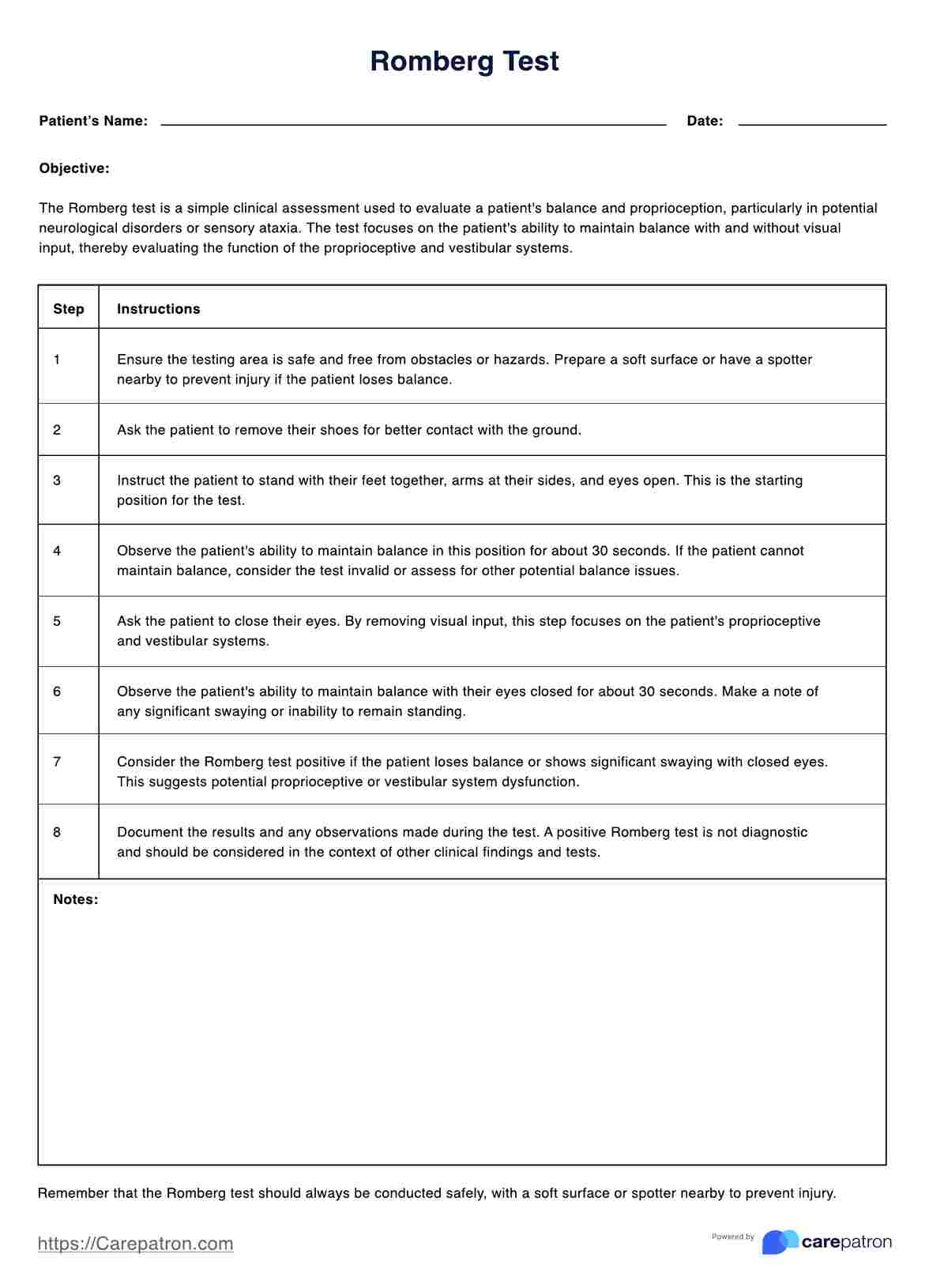
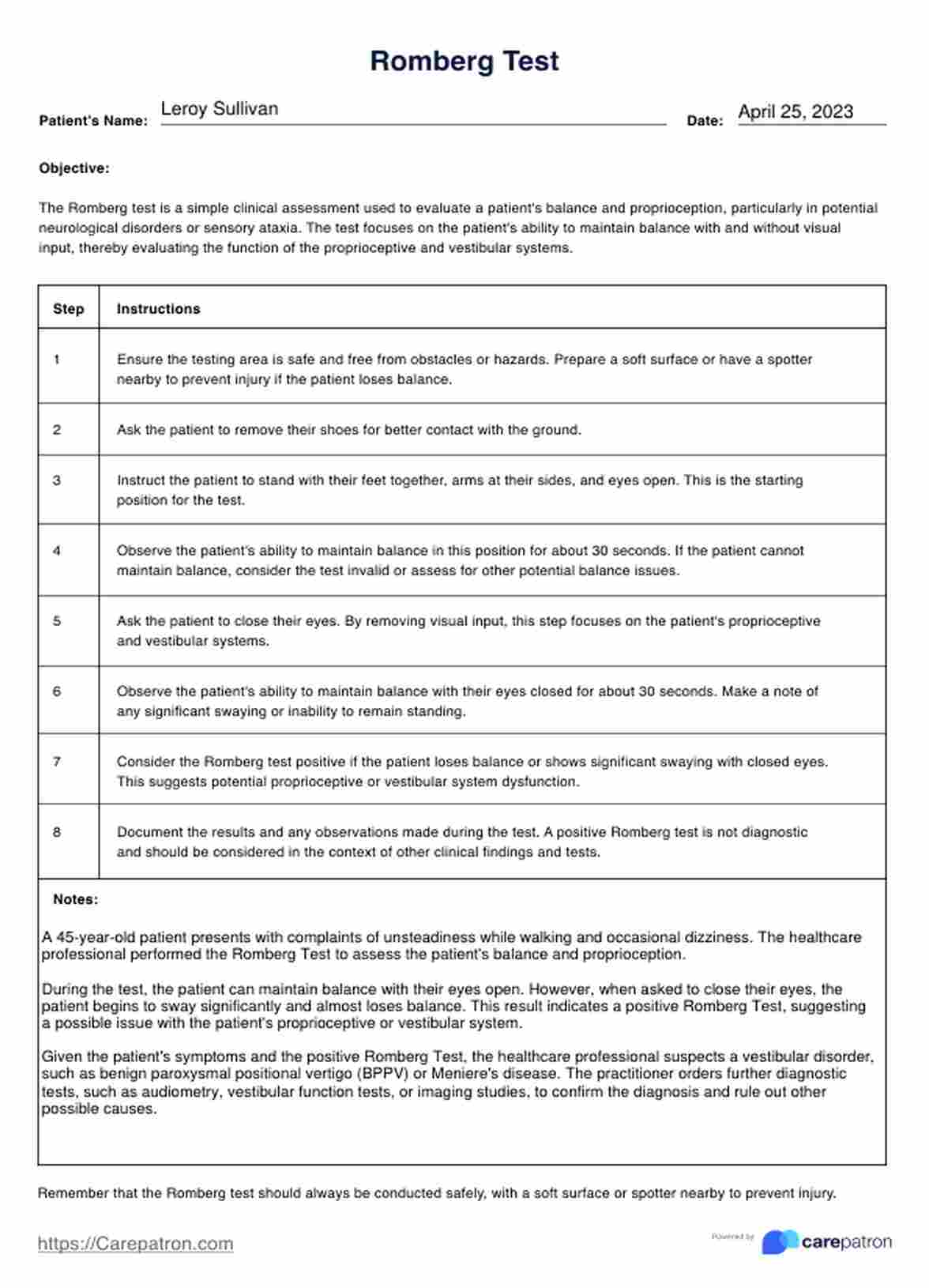

















-template.jpg)


















































































